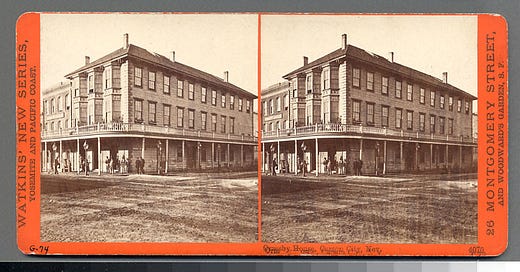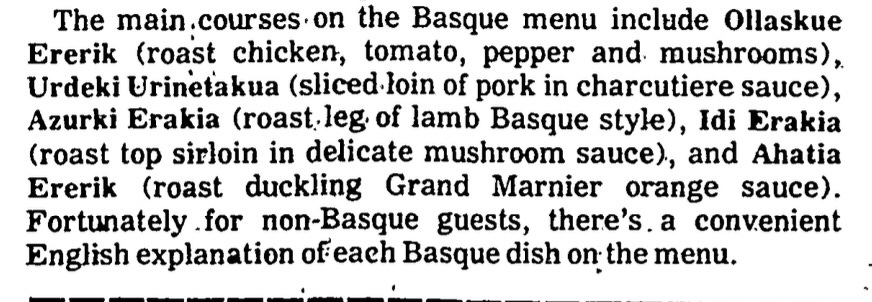Nevada
The Story of Nevada cuisine is singular, one might even say exceptional. Now, when Las Vegas, offers the richest array of global fine dining outside of New York and California in the United States, one might be tempted to say that there is nothing peculiar about Nevada’s cookery. This charge had been leveled at Las Vegas cookery since Harvey House made the town a hub on its western chain of railroad town hostelries early in the 20th century. But one city’s cosmopolitanism does not define a territory or a state’s cookery.
In the beginning there was the natural product of the land and the crops nurtured by the Native populations. The corn and beans and game cookery of the Western Shoshone, Northern & Southern Piute, Washoe, and Fort Mojave People sustained their communities for century, to this very day. When Anglo and Basque settlers came into the Great Basin, they saw that instead of it being a western desert, it afforded sustenance to those who settled there.
Two ambitions drove early European settlement of Nevade: the quest for mineral wealth and the need to feed herds of sheep. The sheep herders tended to be Basque, the prospectors an assortment of British and northern European nationals. In the 1870s the mining towns—Eureka, Carson City, Virginia City, Belmont, and Pioche—sprouted hotels, restaurants, and saloons.
Those who struck it rich demanded San Francisco French food, so San Francisco chefs such as Pierre Trapet, indulged their spirit of adventure, setting up in the boom towns. Trapet gravitated to Pioche. Eureka in the boom years boasted The Bureau Hotel, The Depot, The Jackson Hotel, the International Hotel, Silver Brick Hotel and Turner House for hostelries. The restaurants included The Exchange, Moch’s Epicurean, Parker House, The United States, and Base Range. There were seven saloons and Fiske’s Bakery and Confectionery Store. While every restaurant claimed they would supply the freshest and best that the market afforded, only Moch’s, Turner House, Parker House, and the Exchange claimed superlative cookery. The others sought custom on grounds of their bars, cheapness, and round the clock availability. Moch’s and the Parker House boasted the availability of oysters. Meat was important: lamb, mutton, beef, and turkey were foregrounded on the menus. The high end establishments offered game during the winter season. Spirits and beer dominated the alcohol offerings; wine was rarely advertised, with the exception of champagne.
In Carson City during the Silver Rush years hotel dominated the dining scene: George Tufly’s St. Charles Hotel made a point of stressing skill in serving families. George Fryer’s The Ormsby House asserted the preeminence of its table offerings. These stood in contrast to The Corbett House which indicated that it wished patrons who boarded by the week. The Corbett brothers promoted feeding rather than dining. Of the town’s restaurants and saloons, The Fountain on Carson Street boasted its first class meats while Charles Legates Coffee Stand and Restaurant between Carson and King Street supplied the best approximation of a French Café found in the Nevada Territory.
In the 1970s a French Basque Chef, Pierre-Leon Lorda, took over the kitchen of the renovated Ormsby House in Carson City, and married both strains of Nevada settler cookery: the Basque mutton-based meat dishes and spicing and French fine dining in a remarkable act of culinary re-imagining.[“Gourmet Menu in Basque Tradition,” Las Vegas Review-Journal (July 7, 1972), 67.] While the Frenichified western proteins were relatively standard fare—sole marguery, roast prime rib of beef au jus, top sirloin steak, double French cut lamb chops—the Basque side of the bill of fare was striking:
The story of Basque eating houses in the American West is a story waiting to be told. There were significant figures in making the adaptations of available ingredients to Basque tastes—restaurateur Jose Gestal in Boise Idaho is a case that I explored in The Culinarians. Frank Roebles’s Two-Bit Restaurant in 1870s Eureka with its dinner of “all sorts of roasted and boiled meats” was one such eating house in the silver cities of Nevada. No doubt there were others.






I can just imagine this pastiche of fine dining with cowboy culture--the exciting and brash energy of the West co-mingling with tastes and manners of the monied elite in this harsh-but-rich territory. Thanks for the movie in my mind!
https://eccentricculinary.substack.com/p/basque-american-the-authentic-cuisine